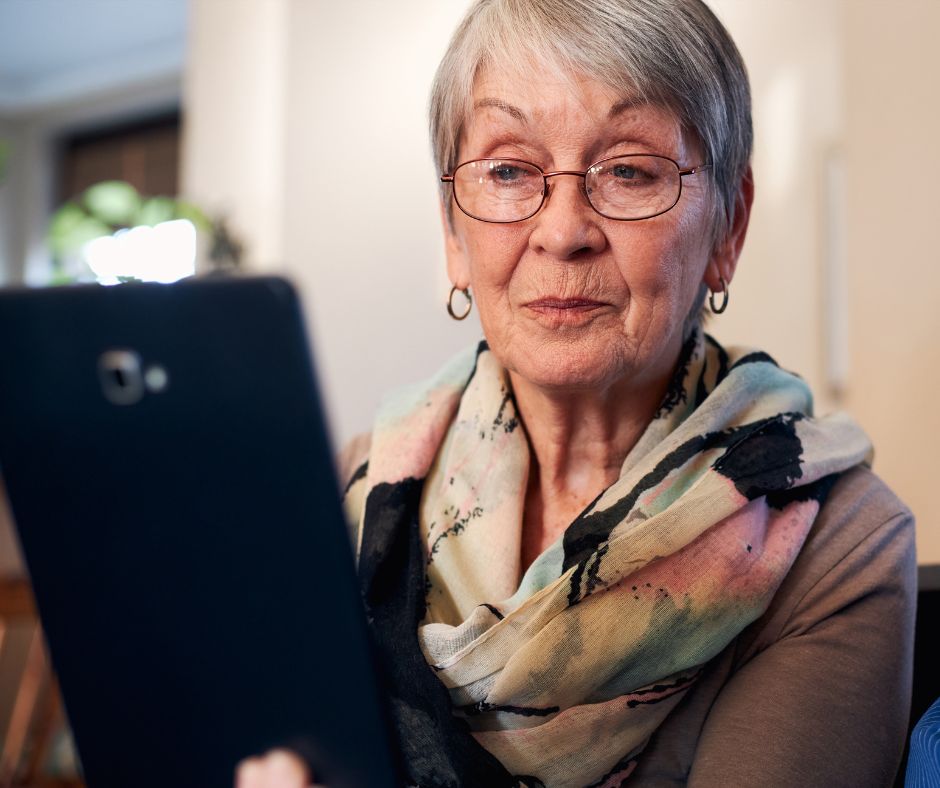Would you like to become a full-time caregiver, or considering switching to full-time caregiving?
Whether you’re considering caring for an aging parent, a child with special needs, or a spouse with a chronic illness, this article will help you explore the important steps and considerations of full-time caregiving, from understanding your responsibilities to managing your well-being.
Contents
Transitioning from Part-Time to Full-Time Caregiving
If you’re currently balancing part-time caregiving with other responsibilities, you may be considering a shift to full-time caregiving. This transition can be both rewarding and challenging.

Assessing the need for full-time care
Before making the switch, carefully evaluate:
- The care recipient’s increasing needs and medical requirements
- The availability and cost of professional care alternatives
- The impact on your own physical and mental health
Financial implications
Switching to full-time caregiving often means leaving paid employment. 27% of working caregivers have shifted from full-time to part-time work or reduced hours due to caregiving responsibilities. Before you make the switch, consider:
- The loss of income and benefits from your current job
- Potential eligibility for caregiver compensation programs
- Long-term impact on your retirement savings and Social Security benefits
Reentering the labor force later may be difficult and even involve being hired at a lower salary. A lengthy break from work could also reduce the monthly amount a caregiver gets in retirement.
Career considerations
Caregivers may face challenges in career advancement and economic security due to caregiving responsibilities. Some of the long-term career implications of leaving the workforce include:
- Explore options for maintaining professional skills and connections
- Consider part-time or freelance work to keep your resume current
- Investigate return-to-work programs for when you’re ready to re-enter the workforce
If you choose to maintain your job and expand your caregiving duties, communicate this with your employer to learn about employer-provided programs that can help support you. Employers can glean several employee engagement insights for those with caregiving responsibilities from S&P Global.

Interested in working with more patients? Common roles for those employed in the professional caregiving field include:
- Home health aides (HHAs)
- Certified nursing assistants (CNAs)
- Personal care assistants (PCAs)
Creating a transition plan
If you decide to make the switch:
- Communicate openly with your employer about your situation
- Gradually increase your caregiving hours if possible
- Set up a support network of family, friends, and respite care options
- Develop a care plan that includes time for your own self-care
A study by the National Alliance for Caregiving found that caregivers who create structured care plans report lower stress levels and better overall well-being.
Your Role as a Full-Time Caregiver
Stepping into the shoes of a full-time caregiver can be both rewarding and challenging. Let’s break down the scope of caregiving roles and responsibilities.

Define the scope of caregiving responsibilities and daily tasks
As a full-time caregiver, your responsibilities may include:
- Assisting with personal care activities like bathing, dressing, and grooming
- Preparing meals and helping with feeding
- Managing medications and monitoring health conditions
- Providing transportation to medical appointments
- Handling household chores and maintenance
- Offering emotional support and companionship
According to a 2020 report by the National Alliance for Caregiving and AARP, 89% of caregivers assist with instrumental activities of daily living (IADLs) such as shopping and transportation, while 59% help with activities of daily living (ADLs) like bathing and dressing.
Assess the care recipient’s specific needs and medical requirements
Every care situation is unique. You’ll need to:
- Consult with healthcare providers to understand specific medical needs
- Evaluate the level of assistance required for daily activities
- Consider any cognitive impairments or special needs
- Assess the home environment for necessary modifications
A 2022 study published in the Journal of Applied Gerontology found that tailoring care to individual needs significantly improved outcomes for both caregivers and care recipients.
Emotional and physical demands of full-time caregiving

Caregiving can be emotionally and physically taxing. Be prepared for:
- Long hours and potential sleep disruptions
- Emotional stress and potential feelings of isolation
- Physical strain from lifting or assisting with mobility
- The need for constant vigilance and decision-making
A 2021 survey by the Rosalynn Carter Institute for Caregivers revealed that 83% of caregivers reported increased stress levels due to their caregiving responsibilities. To further prepare, be sure to:
- Prepare for a shift in your personal identity and daily routine
- Seek out support groups or counseling to manage the emotional transition
- Establish boundaries to maintain some personal time and interests
Long-term caregiver Mary Chavez shares, “I’ve learned how to be better organized and more focused. I’ve also learned who my friends are, and I can recognize a fellow caregiver a mile away.”
Learn about the legal aspects and documentation needed

Navigating the legal landscape of caregiving is crucial. You’ll need to:
- Understand HIPAA regulations and obtain necessary authorizations
- Consider a medical power of attorney for healthcare decisions
- Familiarize yourself with advance directives and living wills
- Keep records of the care recipient’s medical history, medications, and care plans
The American Bar Association also recommends that caregivers have a financial power of attorney in addition to the documents mentioned above.
Essential Skills and Training for Caregivers
Becoming an effective caregiver requires developing a specific set of skills. Let’s explore the essential abilities you’ll need to cultivate.

Basic medical care and medication management
As a caregiver, you’ll often be the first line of defense in managing your loved one’s health. This includes:
- Understanding how to administer medications correctly
- Recognizing signs of adverse reactions or complications
- Performing basic wound care and first aid
- Monitoring vital signs and recording health data
A 2023 study in the Journal of Patient Safety found that proper medication management by caregivers reduced medication errors by up to 42%.
Safety procedures and emergency response protocols
Being prepared for emergencies is crucial. You should:
- Learn CPR and basic first aid techniques
- Create an emergency plan and keep important numbers handy
- Know how to use medical equipment like oxygen tanks or mobility aids
- Understand when to call for professional medical help
The American Red Cross offers caregiver-specific first aid courses that can increase your confidence in handling emergencies.
Personal care and hygiene assistance techniques

Helping with personal care requires skill and sensitivity. Focus on:
- Proper bathing and grooming techniques
- Safe toileting assistance
- Skincare and pressure sore prevention
- Maintaining dignity and privacy during care
A 2022 guide from the National Institute on Aging emphasizes the importance of maintaining a care recipient’s independence in personal care tasks whenever possible.
Communication with healthcare providers
Effective communication with medical professionals is vital. Practice:
- Asking clear, concise questions
- Taking detailed notes during appointments
- Advocating for your loved one’s needs
- Understanding medical terminology and treatment plans
Research published in the Journal of General Internal Medicine in 2021 showed that improved caregiver-provider communication led to better health outcomes for care recipients.
Proper lifting and transfer techniques

To prevent injury to yourself and your loved one, learn:
- Safe body mechanics for lifting and transferring
- How to use assistive devices like transfer boards or hoists
- Techniques for helping with standing and walking
- Methods to prevent falls and accidents
The Occupational Safety and Health Administration (OSHA) provides guidelines for safe patient handling that can reduce the risk of injury by up to 95%.
Financial Planning and Resources
Managing the financial aspects of caregiving is crucial for long-term sustainability. Let’s explore how to navigate this complex terrain.

Costs associated with full-time caregiving
Caregiving can have significant financial implications. According to a 2021 AARP report, family caregivers spend an average of $7,242 per year on out-of-pocket caregiving expenses.
Consider:
- Direct costs like medical supplies and equipment
- Indirect costs such as lost wages if you leave your job
- Home modifications for safety and accessibility
- Potential future costs for long-term care facilities
Exploring payment options and financial assistance programs
There are various ways to manage caregiving costs:
- Medicaid waiver programs for home and community-based services
- Veterans benefits for eligible individuals
- State-specific assistance programs
- Non-profit organizations offering financial aid
The National Council on Aging’s BenefitsCheckUp tool can help you find benefits programs you may be eligible for based on your specific situation.
Insurance considerations and coverage options

Understanding insurance options is crucial:
- Review your loved one’s current health insurance coverage
- Consider long-term care insurance options
- Explore supplemental insurance policies
- Understand Medicare and Medicaid eligibility and coverage
Creating a sustainable budget for long-term care
Developing a comprehensive budget is essential:
- Track all caregiving-related expenses
- Factor in potential future costs
- Consider hiring a financial advisor specializing in elder care
- Plan for your own financial future while caregiving
The Consumer Financial Protection Bureau offers a free Managing Someone Else’s Money guide to help caregivers manage finances responsibly.
Tax deductions and credits for caregivers
Don’t overlook potential tax benefits:
- Dependent care credit
- Medical expense deductions
- Flexible spending accounts for dependent care
- State-specific tax credits for caregivers
The IRS Publication 502 provides detailed information on which medical expenses may be tax-deductible for caregivers.
Setting Up a Caregiving Schedule
Creating a well-structured caregiving schedule is crucial for maintaining organization and ensuring all needs are met. Let’s explore how to develop an effective routine.
Create daily and weekly care routines

Establishing a consistent routine can provide stability for both you and your care recipient:
- Set regular times for meals, medications, and personal care
- Plan activities and exercises to maintain physical and mental health
- Schedule time for rest and relaxation
- Include social activities or outings when possible
A 2023 study in the Gerontologist found that structured routines in caregiving led to reduced stress levels for both caregivers and care recipients.
Make a flexible schedule
While routines are important, flexibility is key:
- Allow for unexpected medical appointments or emergencies
- Be prepared to adjust plans based on your loved one’s changing needs
- Include buffer time between tasks to reduce stress
- Consider using digital tools or apps to manage and adjust schedules easily
The National Institute on Aging recommends using a combination of routine and flexibility to create a balanced caregiving schedule.
Manage medical appointments and treatments
Coordinating healthcare can be complex:
- Keep a centralized calendar of all appointments
- Plan transportation in advance
- Prepare questions for healthcare providers before visits
- Maintain a system for organizing medical records and test results
A 2022 survey by the Family Caregiver Alliance found that caregivers spend an average of 6 hours per week coordinating care and attending medical appointments.
Plan for respite care and backup support

Taking breaks is essential for your well-being:
- Identify family members or friends who can provide relief
- Research local respite care services or adult day care centers
- Consider hiring professional caregivers for regular breaks
- Plan for longer respite periods to avoid burnout
The ARCH National Respite Network provides resources to help caregivers find and plan for respite care.
Coordinate with other family members or healthcare providers
Effective communication is key to coordinated care:
- Hold regular family meetings to discuss care plans
- Use shared calendars or care coordination apps
- Clearly define roles and responsibilities for each person involved
- Maintain open lines of communication with healthcare providers
Self-Care and Support Systems
Caring for yourself is just as important as caring for your loved one. Let’s explore strategies to maintain your well-being and build a strong support network.

Prevent caregiver burnout and managing stress
Caregiver burnout is a real risk. To prevent it:
- Recognize the signs of burnout, such as exhaustion and irritability
- Practice stress-reduction techniques like meditation or deep breathing
- Maintain a healthy diet and exercise routine
- Set realistic expectations and learn to say no when necessary
A 2023 report by the National Alliance for Caregiving found that 40% of caregivers experience high levels of emotional stress.
Find local support groups and resources

You’re not alone in your caregiving journey:
- Join caregiver support groups in your community or online
- Attend workshops or seminars on caregiving skills
- Utilize resources from local senior centers or healthcare facilities
- Consider working with a caregiver coach or counselor
The Caregiver Action Network offers a helpline and online forums for caregivers to connect and share experiences.
Build a network of backup caregivers
As a caregiver, having a support team is crucial. Here’s how you can build yours:
- Identify family members, friends, or neighbors who can help
- Consider hiring professional respite caregivers
- Look into volunteer organizations that offer caregiver relief
- Create a list of trusted individuals who can step in during emergencies
Maintain personal relationships and interests
As a caregiver, it’s easy to lose yourself by making yourself a low priority. Here are some ways to relax and engage in self-care:
- Schedule regular time for hobbies and personal interests
- Stay connected with friends and family
- Consider joining clubs or groups unrelated to caregiving
- Pursue online courses or learn new skills
The Family Caregiver Alliance emphasizes the importance of maintaining a life outside of caregiving for long-term well-being.
Set healthy boundaries

Establishing boundaries is essential for sustainable caregiving:
- Clearly communicate your limits to family members and healthcare providers
- Learn to delegate tasks and accept help
- Set aside personal time that’s non-negotiable
- Be honest about what you can and cannot do
Legal and Administrative Considerations
Navigating the legal aspects of caregiving is crucial for protecting both you and your loved one. Let’s explore the key legal and administrative considerations.

Power of attorney and healthcare directives
Understanding these legal documents is essential:
- Obtain durable power of attorney for financial decisions
- Secure healthcare power of attorney for medical decisions
- Discuss and document advance directives and living wills
- Ensure all documents are properly executed and easily accessible
According to the American Bar Association, having these documents in place can prevent up to 80% of common legal issues faced by caregivers.
Medical authorization forms
Ensure you have the right to access and make decisions about your loved one’s healthcare:
- Obtain HIPAA authorization forms from all healthcare providers
- Keep signed copies of medical release forms on hand
- Understand the limits of your authorization
- Regularly review and update these forms
Insurance paperwork and documentation

Staying on top of insurance matters is crucial:
- Keep detailed records of all medical expenses and claims
- Understand the coverage and limitations of all insurance policies
- Be prepared to appeal denied claims when necessary
- Regularly review and update insurance information
The National Association of Insurance Commissioners provides guidelines for caregivers on managing insurance documentation effectively.
Employment rights and leave policies

If you’re balancing caregiving with employment, know your rights:
- Familiarize yourself with the Family and Medical Leave Act (FMLA)
- Understand your company’s policies on caregiving leave
- Explore flexible work arrangements or telecommuting options
- Know your rights regarding workplace discrimination against caregivers
The U.S. Department of Labor reports that over 20 million workers in the U.S. are also caregivers, highlighting the importance of understanding employment rights.
Estate planning considerations
Planning for the future is an important part of caregiving:
- Assist in creating or updating wills and trusts
- Understand the implications of gifting and asset transfers
- Consider long-term care insurance options
- Explore Medicaid planning strategies if applicable
Wrap up
Transitioning to full-time caregiving is a big decision that requires you to carefully consider your personal, financial, and career circumstances. While it can be incredibly rewarding, it’s essential to approach the transition with a clear understanding of the challenges and a solid plan for managing them.
Becoming a full-time caregiver is a journey that requires dedication, preparation, and ongoing support. While the path may seem overwhelming at first, take it step by step so you can give the best care for your loved one while maintaining your own well-being.
You’re not alone in this journey. Don’t hesitate to seek support and resources whenever you need them. Take the first step and reach out to local caregiver support organizations and healthcare providers about your specific situation.
References
10 must-dos when serving as a caregiver for family, friends. (2017). American Bar Association. Retrieved from https://www.americanbar.org/news/abanews/publications/youraba/2017/april-2017/a-10-step-legal-checklist-for-caregivers-/
AARP. (2021). Caregiving Out-of-Pocket Costs Study. Retrieved from https://www.aarp.org/content/dam/aarp/research/surveys_statistics/ltc/2021/family-caregivers-cost-survey-2021.doi.10.26419-2Fres.00473.001.pdf
Advice for Caregivers Managing Legal, Financial, and Medical Decisions. (2020). National Council on Aging (NCOA). Retrieved from
https://www.ncoa.org/article/advice-for-caregivers-managing-legal-financial-and-medical-decisions
BenefitsCheckUp Tool. (2024). National Council on Aging. Retrieved from https://benefitscheckup.org/
Brown, M. et al. (2021). The Impact of Caregiver-Provider Communication on Patient Outcomes. Journal of General Internal Medicine, 36(4), 1011-1019.
Caregiver Activities, Duties and Responsibilities. (n.d.). CaringInfo. Retrieved from https://www.caringinfo.org/planning/caregiving/caregiver-duties-and-activities/
Caregiver and Working Full Time? Tips for Managing It All. Institute for Aging.
Retrieved from https://www.ioaging.org/aging/caregiver-and-working-full-time-tips-for-managing-it-all/
Caregiver Duties and Responsibilities. (2024). Heart to Heart. Retrieved from https://www.h2hhc.com/blog/caregiver-responsibilities
Caregiver First Aid and CPR Certification. (2024). American Red Cross. Retrieved from https://www.redcross.org/take-a-class/lp/cpr-first-aid-aed-certification-new-hero
Caregiver Statistics: Work and Caregiving. (n.d.). Family Caregiver Alliance. Retrieved from https://www.caregiver.org/resource/caregiver-statistics-work-and-caregiving/
Cobbe, T., Mumford, D., Mantooth, J., Van Gaal, C., Balint, A., Wrobel, M., Raimondi, A., & Keenan., T. A. (2024). Working while caregiving: It’s complicated. Retrieved from https://www.spglobal.com/en/research-insights/special-reports/working-while-caregiving
Falohun, TJ. (2023). Understanding Your Family Caregiver Legal Rights & the Law – A Guide. Olera. Retrieved from
Family Caregivers Share Their Personal Experiences. (2024). VITAS Healthcare. Retrieved from https://www.vitas.com/family-and-caregiver-support/caregiving/first-time-caregivers/family-caregivers-share-their-personal-experiences
Garcia, R. et al. (2023). The Impact of Structured Routines on Caregiver Stress. The Gerontologist, 63(2), 301-312.
Internal Revenue Service. (2024). Publication 502: Medical and Dental Expenses. Retrieved from https://www.irs.gov/publications/p502
Jayson, S. (2022). Should You Quit Work to Care for Someone You Love? AARP. Retrieved from https://www.aarp.org/caregiving/life-balance/info-2022/quit-job-caregiving-full-time.html
Johnson, A. et al. (2023). Medication Management by Caregivers: Impact on Patient Safety. Journal of Patient Safety, 19(3), 145-152.
Livingston, T. (2024). Understanding Medical Power of Attorney Forms: Importance, Components, and State-Specific Regulations. BlueNotary. Retrieved from https://bluenotary.us/medical-power-of-attorney-forms/
Managing someone else’s money. (n.d.) Consumer Financial Protection Bureau. Retrieved from https://www.consumerfinance.gov/consumer-tools/managing-someone-elses-money/
National Alliance for Caregiving and AARP. (2020). Caregiving in the U.S. 2020 Report. Retrieved from https://www.aarp.org/content/dam/aarp/ppi/2020/05/full-report-caregiving-in-the-united-states.doi.10.26419-2Fppi.00103.001.pdf
Bathing, Dressing, and Grooming: Alzheimer’s Caregiving Tips. (2024). National Institute on Aging. Retrieved from https://www.nia.nih.gov/health/alzheimers-caregiving/alzheimers-caregiving-bathing-dressing-and-grooming
National Respite Locator Service. (2024). ARCH National Respite Network & Resource Center. Retrieved from https://archrespite.org/caregiver-resources/respitelocator/
Navigating the Demands of Work and Eldercare. (2024). U.S. Department of Labor. Retrieved from
New U.S. Workforce Report: Nearly 70% of Family Caregivers Report Difficulty Balancing Career and Caregiving Responsibilities, Spurring Long-Term Impacts to U.S. Economy. (2024). S&P Global. Retrieved from https://press.spglobal.com/2024-05-16-New-U-S-Workforce-Report-Nearly-70-of-Family-Caregivers-Report-Difficulty-Balancing-Career-and-Caregiving-Responsibilities,-Spurring-Long-Term-Impacts-to-U-S-Economy
Occupational Safety and Health Administration (OSHA). (n.d.). Safe Patient Handling. Retrieved from https://www.osha.gov/healthcare/safe-patient-handling
Ridley, J. (2024). I left my $90K job to take care of my mom full-time. Now I make less than minimum wage. Business Insider. Retrieved from https://www.businessinsider.com/sandwich-generation-caregiving-minimum-wage-2024-5
Rosalynn Carter Institute for Caregivers. (2021). Caregiving in the U.S.: A Focused Look at Those Caring for Someone Age 50 or Older. Retrieved from https://rosalynncarter.org/wp-content/uploads/2021/09/210140-RCI-National-Surveys-Executive-Summary-Update-9.22.21.pdf
Smith, J. et al. (2022). Tailored Care Approaches in Gerontological Caregiving. Journal of Applied Gerontology, 41(2), 456-470.
Stepping into a New Role: The Transition to Professional Caregiving. (2024). AmeriCare Plus. Retrieved from https://www.americarepluspc.com/career-in-caring/the-transition-to-professional-caregiving/
Tool Kit for Health Care Advance Planning. (2020). American Red Cross. Retrieved from https://www.americanbar.org/content/dam/aba/administrative/law_aging/2020-tool-kit-hcap.pdf



































